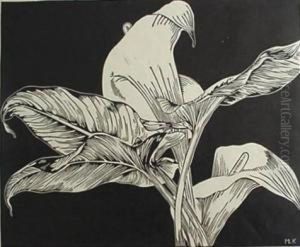Mary Louisa Wing Paintings
Mary Louisa Wing, born in 1829, was an American artist whose work and contributions to the art world spanned the latter half of the 19th century and the early 20th century, until her death in 1912. While not as widely recognized as some of her contemporaries, Wing's artistry and dedication to her craft have garnered her a place in the annals of American art history, particularly within the realm of women artists who were pioneering professionals in a predominantly male-dominated field during that era.
Wing's artistic journey is emblematic of the challenges and triumphs faced by women artists of her time. Despite the societal constraints that often limited women's access to formal art education and professional opportunities, she managed to cultivate a distinctive style and voice through her work. Her artistic output, which predominantly consisted of paintings and illustrations, reflects a keen observation of the natural world, with a particular emphasis on botanical and landscape subjects. Wing's meticulous attention to detail and her ability to capture the subtle nuances of light and shadow in her depictions of flora and rural landscapes speak to her mastery of the medium and her deep appreciation for the beauty of the natural environment.
Throughout her career, Mary Louisa Wing was an active participant in the art community, contributing to exhibitions and engaging with various art societies of her time. Her work was exhibited in several notable venues, providing her with a platform to reach a wider audience and to participate in the broader discourse surrounding art and its societal value. Despite the recognition she received during her lifetime, Wing's legacy, like that of many women artists of her era, was somewhat overshadowed by her male counterparts in the years following her death.
In recent years, there has been a renewed interest in the life and work of Mary Louisa Wing, as art historians and scholars continue to uncover and reassess the contributions of women artists to the development of American art. Wing's dedication to her art, coupled with her resilience in the face of societal limitations, offers a compelling narrative of creativity and perseverance. Her surviving works, though not as prolific as some of her peers, continue to enchant viewers with their delicate beauty and technical precision, serving as a testament to her skill and passion for the natural world.
Mary Louisa Wing's death in 1912 marked the end of a life dedicated to the pursuit of artistic excellence. In the years since, her work has slowly been re-evaluated, allowing her contributions to be more fully recognized and appreciated within the context of American art history. Her legacy, while still emerging from the shadows, highlights the significant yet often overlooked role women played in shaping the artistic landscape of their time.
